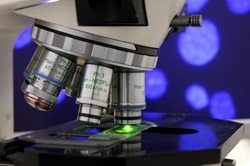Category: Research

NYC Responders Show Pulmonary Disease
New York emergency personnel who responded after the World Trade Center attacks have shown an increased incidence of chronic pulmonary inflammation, researchers at Mt. Sinai reported in a recent clinical study. More than 50,000 men and women were exposed to products of combustion, asbestos and particulate matter after the terrorist attacks on September 11, 2001.
Mount Sinai researchers studied the medical records of almost 20,000 New York firefighters and emergency responders as part of a World Trade Center Monitoring and Treatment Program. The research, published in 2011 in the American Journal of Industrial Medicine, revealed an elevated number of cases of a pulmonary condition called sarcoid like granulomatous pulmonary disease. The average yearly occurrence of the disease among first responders more than tripled from 15 cases per 100,000 in health screenings before Sept. 11, 2001 to 54 cases per 100,000 in 2003 and 2004 —the peak years, according to the new study. Two other studies have reported similar findings.
Sarcoid Like Granulomatous Pulmonary Disease causes inflammation in one or more organs including the lungs and lymph nodes. Granulomas are small tumor-like nodules in the lungs, lymph glands, liver and salivary glands. Granuloma formation may lead to scarring of the lung, known as fibrosis. The cause of the disease is unknown, but it has been linked to multiple environmental and occupational exposures. A portion of those who develop the disease may suffer permanent lung damage.
“Our findings support the hypothesis that environmental exposures generated by the destruction of the World Trade Center may cause ‘Sarcoid like’ Granulomatous Pulmonary Disease,” said Laura Crowley, assistant professor of preventive medicine at Mount Sinai School of Medicine in a press release.
Some research has shown an association between sarcoid like granulomas, sarcoidosis and cancer, but exactly how they are associated remains unclear.
Crowley said monitoring of World Trade Center responders including periodic chest x-rays, must continue so that the NY responders health issues are identified and treated in the early stages.
Philip Landrigan, MD, chair of the Department of Preventive Medicine at the Mount Sinai School of Medicine, said the results of the study clearly support the critical need for ongoing monitoring and treatment for WTC responders.
A medical study published last year in the New England Journal of Medicine reported that New York firefighters and rescue workers who worked at Ground Zero after the 9/11 terrorist attacks still have significantly abnormal lung function years later. Some dust from the World Trade Center destruction contained asbestos and other contaminants, according to the Environmental Protection Agency. Inhaling airborne asbestos is closely associated with respiratory disease including lung cancer and mesothelioma, a cancer of the lining of the lung. Symptoms of mesothelioma typically take 20 to 40 years to appear after exposure to asbestos.

Blocking Cell Proteins That Fuel Mesothelioma
Conventional chemotherapy, radiation treatments and surgery have shown only limited effectiveness in improving the survival of patients with mesothelioma, a malignant cancer caused by asbestos exposure. Patients typically die within a year of diagnosis because mesothelioma is notoriously resistant to chemotherapy and other treatments. A better understanding of the biology of mesothelioma, which produces tumors in the lining of the lung or abdomen, may prove helpful in identifying targets for new therapies. In a January 2011 article in the journal Neoplasia, researchers at Harvard Medical School and Brigham and Women’s Hospital in Boston discuss their cancer research and efforts to “switch off” proteins that contribute to growth of malignant mesothelioma cells. The occurrence of pleural mesothelioma has increased in the United States and abroad since 1970, reflecting the heavy consumption of asbestos starting around World War II. About 3,000 people a year die of mesothelioma in the U.S. Some studies have suggested that certain cell surface proteins—known as Receptor Tyrosin Kinases—are involved in the complex transformation of normal cells into cancer cells in many types of human cancer, including apparently mesothelioma. But it’s still unclear whether the cancer cell transformation depends on a single kinase protein or multiple kinases. The researchers say that blocking tyrosine kinases has proven effective for treating certain human cancers including breast cancer, gastrointestinal tumors, leukemia and non-small cell lung cancer. But therapies targeting tyrosine kinases have not produced notable successes in treating mesothelioma. The researchers cultured 10 lines of mesothelioma cells. The mesothelioma cells showed coordinated expression of elevated levels of certain receptor proteins that cause cells to divide. The elevated protein levels were not present in normal cells. The researchers then treated the mesothelioma cells with drugs that interfered with cell communication by blocking the receptor proteins. The coordinated activation of multiple receptor proteins may allow mesothelioma cells to resist chemotherapy drugs targeting single proteins. The researchers reported that the greatest reduction in the viability of the mesothelioma cells occurred when they blocked multiple types of receptor proteins rather than singling out individual proteins. They hypothesized that inhibiting heat shock protein 90, which belongs to a class of proteins called chaperones that help other growth proteins function properly, might interfere with multiple receptor proteins. HSP 90 is associated with proteins linked to growth and development. The researchers reported that the growth of mesothelioma cells was significantly reduced after HSP 90 was blocked by an inhibitor drug. The results of their research suggest that blocking heat shock protein 90 deserves further study as a new therapy for treating mesothelioma. Further study is needed to determine if the lab results can be replicated in a clinical setting.

Mesothelial Cells Hold Potential for Use in Tissue Repair, New Research Suggests
Researchers at the University of Western Australia have been trying to unlock the secrets of mesothelial cells and their multi-potency.
In an article prepared for the Journal of Cellular and Molecular Medicine, the researchers report that cells in the mesothelium,—the layer of tissue that lines the body’s chest and abdominal cavities, heart and many internal organs— may hold great potential for use in repairing and possibly regenerating tissue elsewhere in the body.
The mesothelium gives its name to mesothelioma, a cancer linked to asbestos exposure that produces tumors in the lining of the lung, abdomen or heart. There are different types of mesothelioma. If the asbestos-related cancer originates in the lining of the lung, it is known as malignant pleural mesothelioma. If it starts in the abdomen, the disease is known as peritoneal mesothelioma.
It’s quite rare, but sometimes mesothelioma tumors may contain tissue similar to that found in cartilage or bone. In medical literature, there are more than 20 reported cases of malignant mesothelioma with tissue bone or cartilage formation. Why that occurs is a puzzle that researchers have been trying to understand.
The Australian researchers set out to see if they could coax mesothelial cells from humans and rats to transform in the lab into different types of cells that store fat and develop into connective tissue. They collected human mesothelial cells from patients undergoing heart surgery. They exposed the mesothelial cells to certain naturally occurring substances released by cells that stimulate other cells to grow and divide.
Over a period of several weeks, they reported observing small changes in the cells consistent with the formation of bone, also known as osteoblasts. In a separate set of experiments, they observed mesothelial cells undergoing changes consistent with development of cells that store fat.
The researchers said their research provides strong evidence that mesothelial cells retain the potential to develop into different types of cells. The research also shows a mechanism by which bone is formed in malignant mesothelioma tumors.
Scientists already have used mesothelial cells in certain engineering applications including the development of blood vessels and replacements for peripheral nerves. The multi-potency of mesothelial cells suggests greater application for the cells to be used to repair and replace tissue and possibly regenerate damaged and defective tissue.
Approximately, 2,500 to 3,000 new cases of mesothelioma are diagnosed in the United States each year. The majority are malignant pleural mesothelioma. Mesothelioma symptoms typically occur decades after exposure to asbestos. Often the cancer has reached an advanced stage before doctors diagnose the condition as mesothelioma.

Researchers Test Gastric Cancer Drug for Treatment of Pleural Mesothelioma
Malignant pleural mesothelioma is an aggressive respiratory cancer and remains difficult to control. Researchers keep searching for new treatment options to help mesothelioma patients live longer with the disease.
In a recent article in the medical journal Cancer, Chemotherapy and Pharmacology, Japanese researchers explore the effectiveness of a new anti-tumor drug known as S-1 for treating malignant pleural mesothelioma, which is closely associated with breathing asbestos.
The incidence of malignant mesothelioma is increasing worldwide with an expected peak in 2030 to 2040 in Asia and sooner in the U.S. and Europe. Complicating the treatment of mesothelioma is the fact that symptoms of asbestos-related cancer such as coughing, fluid around the lungs and chest pain are common to other conditions and mesothelioma often isn’t diagnosed until the disease has reached an advanced stage. In addition, mesothelioma patients are typically older and in weaker health. The standard treatment for advanced mesothelioma is a one-two punch of the chemotherapy drugs, pemetrexed and cisplatin. Yet, the overall prognosis for mesothelioma patients remains poor.
S-1, a chemotherapy drug that is taken orally, was developed by the Japanese drug manufacturer, Taiho Pharmaceutical Co. and is sold under the brand name Teysuno. It is used to treat patients with gastric cancer in Japan, Korea, China and other Asian countries. It was recently recommended for approval as a first line treatment for gastric cancer in Europe, but is not yet available in the U.S.
S-1 is designed to prevent the growth of cancer cells and also to enhance the effectiveness of another anti-cancer medication, 5-FU. To test the drug’s effectiveness on mesothelioma, researchers at the University of Tokushima implanted malignant mesothelioma cells into the chest cavities of mice. Their intent was to see whether S-1 would reduce the growth of cancerous tumors and the occurrence of bloody pleural fluid caused by mesothelioma.
The researchers reported that treatment with S-1 significantly reduced tumor growth in mice with certain lines of mesothelioma cells and prolonged their survival. One of the key compounds in S-1 is CDPH, which enhances the antitumor activity of 5-FU as well. Since human patients are typically diagnosed in the later stages of mesothelioma, the researchers delayed treating the mice until their tumors were advanced. They still responded to the chemotherapy and it prolonged their survival, suggesting that S-1 may be applicable for treatment of human mesothelioma patients in a clinical setting.
The research suggests that S-1 may be an effective therapy for controlling malignant pleural mesothelioma.

More Personalized Treatment for Mesothelioma Patients in the Future
Physicians who specialize in treating mesothelioma predict that in the next five to 10 years, researchers will identify more accurate ways to detect the disease and tailor treatment to individual patients. Mesothelioma is an incurable cancer of the lining of the lung or abdomen closely associated with exposure to asbestos. Asbestos was widely used in building materials, fireproofing and insulation through much of the 20th century.
In an article in the November issue of Clinical Lung Cancer, Drs. Linda Garland of the Arizona Cancer Center, Raja Flores of the Mount Sinai School of Medicine in New York and Anne Tsao of the M.D. Anderson Cancer Center predict that the global burden of mesothelioma will increase in the decade ahead, particularly outside the United States. In the U.S., about 2,500 to 3,000 die each year of mesothelioma. With cases of mesothelioma expected to spread, doctors need more effective treatments for the aggressive cancer and more personalized treatments for patients, they say.
Under current medical practice, doctors select mesothelioma patients to undergo radical surgery to remove cancerous tumors based on factors including the stage of the cancer, specific structure of the cancer cells, lung function and the patient’s overall health. But these factors are not very good predictors of long-term survival. Less than a third of the mesothelioma patients selected undergo radical surgery live four to five years, according to the article.
The researchers say there is an opportunity for development of tests for earlier detection of mesothelioma through telltale molecules in the bloodstream, known as biomarkers. Biomarkers are a relatively new but promising area of genetic research. One researcher has compared biomarkers to fingerprints of the disease. For example, the prevalence of a biomarker protein identified as microRNA-29c in mesothelioma tissue has been linked to longer patient survival and improved prognosis after surgery, according to an important recent study. These patients may be better candidates for tumor removal surgery, if the biomarker are validated by further research.
The article authors say that progress has been made in the last decade in the development of chemotherapy drugs for mesothelioma. Longer survival for mesothelioma patients may be possible with chemotherapy regimens tailored to the individual patients in the future. According to the studies, this may be possible if biomarkers can be pinpointed to help doctors identify which patients are receptive to individual chemotherapy drugs such as pemetrexed-based therapy.
Doctors are still awaiting the development of a break-through drug or therapy that may allow the targeting of mesothelioma tumors, according to the article. In the next five to 10 years, they say there will be promising developments toward a brighter future for mesothelioma patients.
Free Mesothelioma Patient & Treatment Guide
We’d like to offer you our in-depth guide, “A Patient’s Guide to Mesothelioma,” absolutely free of charge.
It contains a wealth of information and resources to help you better understand the condition, choose (and afford) appropriate treatment, and exercise your legal right to compensation.
Download Now